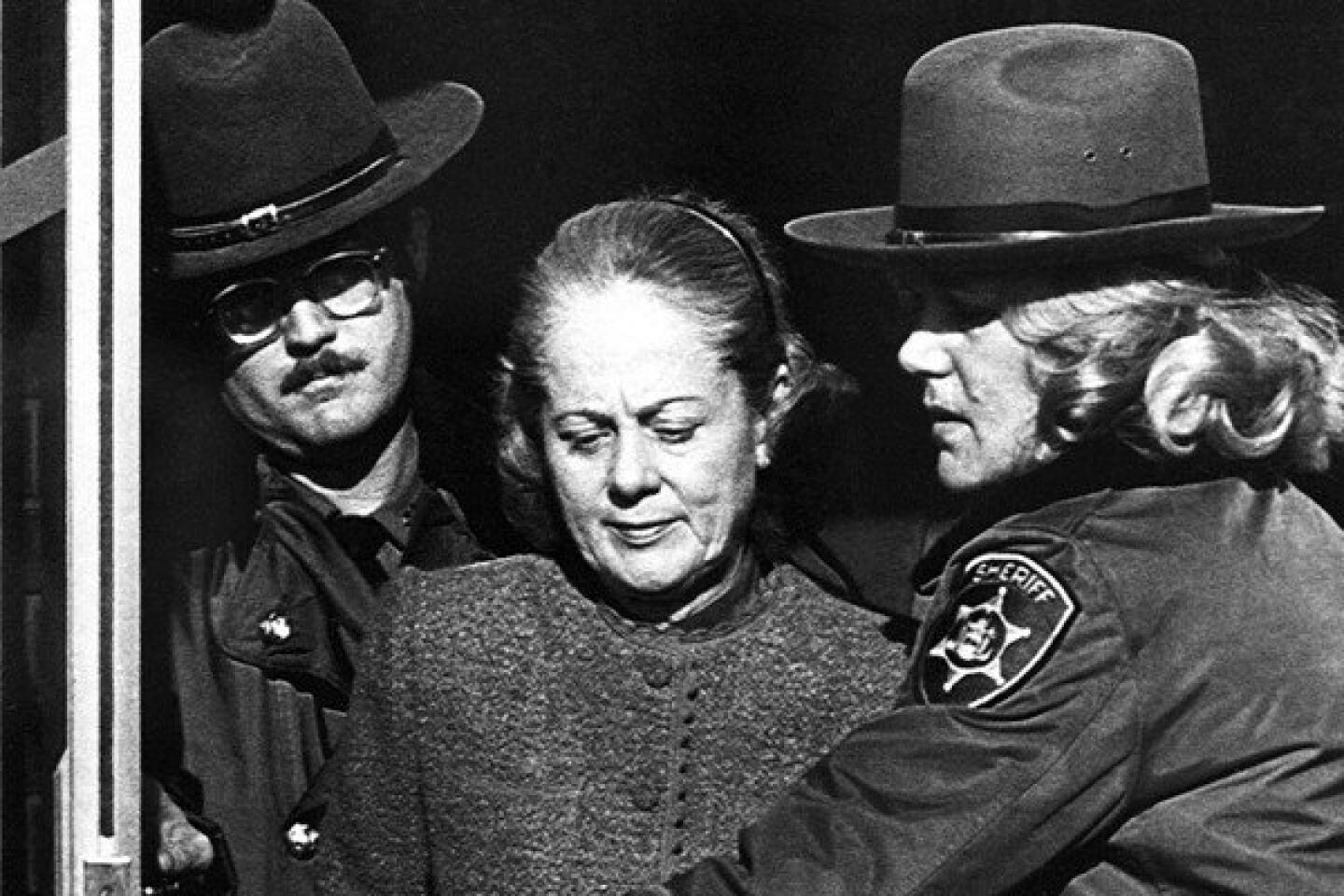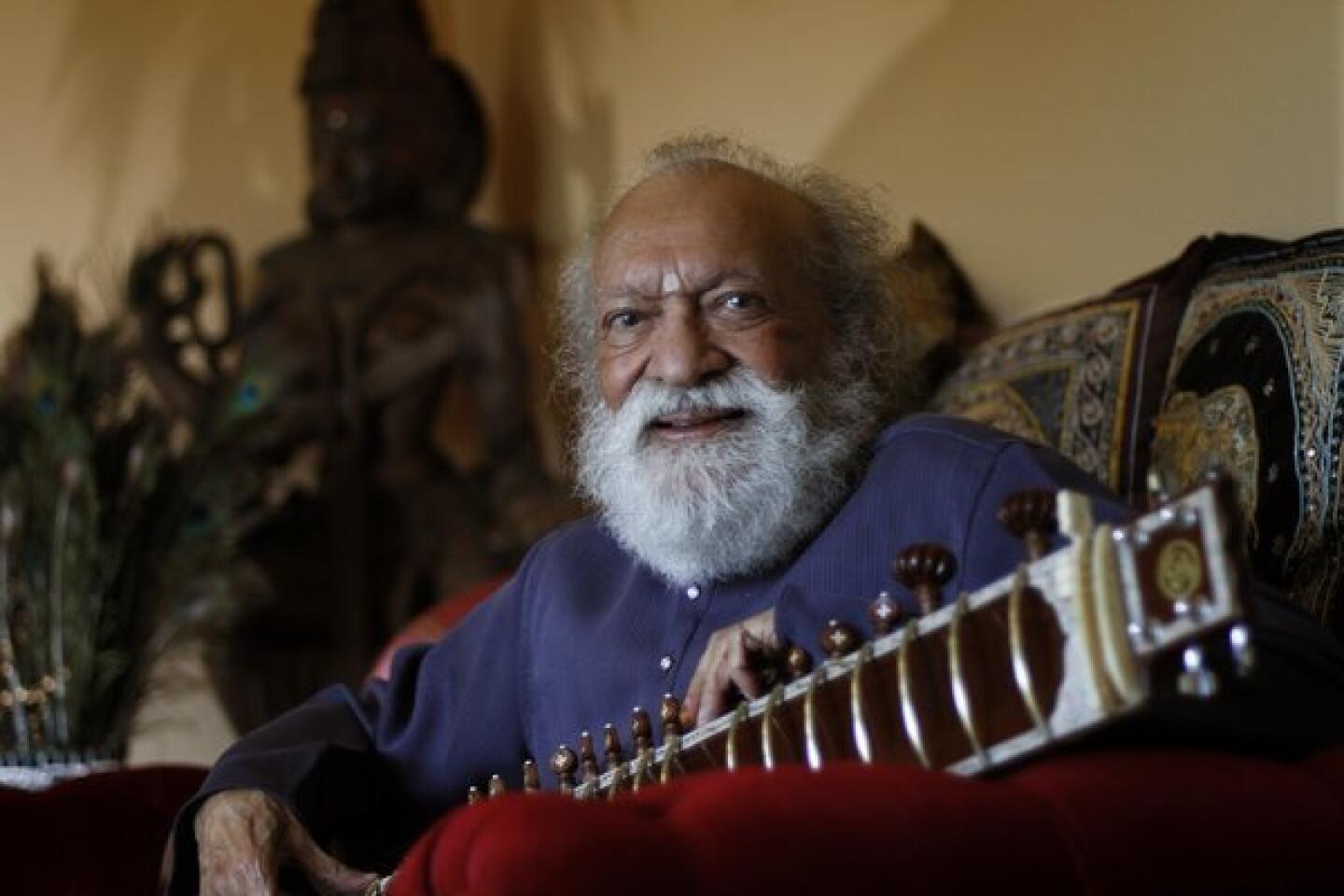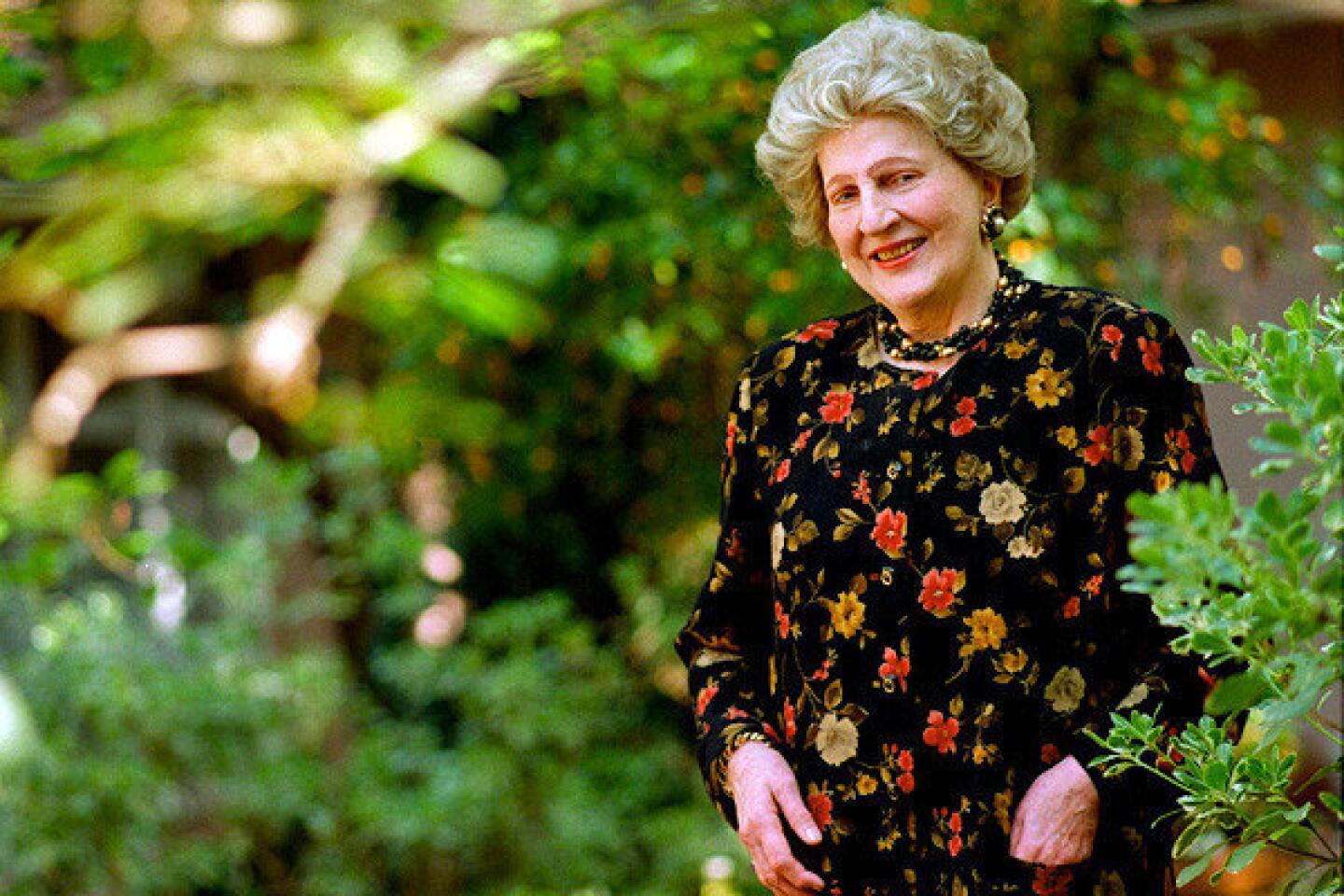Jean Craighead George dies at 92; children’s author
- Share via
After children’s author Jean Craighead George revealed that she wanted to write a book about a girl who talks with wolves, legendary book editor Ursula Nordstrom reportedly asked one question — will it be accurate? — and most certainly knew the answer.
Raised as a naturalist, George grounded her fiction in her true-life wilderness adventures, publishing more than 100 books over 60 years.
One of her best-known novels was the Newbery Medal-winning “Julie of the Wolves,” a 1972 book inspired by a trip George took to Alaska to study wolves at the Naval Arctic Research Laboratory. She had been exhilarated when a scientist taught her to “talk” to a wolf in its own language and haunted by a young Eskimo standing alone on the vast tundra.
George, who was a leading writer of novels about nature for young readers, died of congestive heart failure May 15 at a hospital in Mount Kisco, N.Y., said her daughter, Twig George. She was 92.
“Another great author in children’s literature passes,” Jennifer Crow, curator of Cal State Fresno’s Arne Nixon Center for the Study of Children’s Literature, told The Times. “Jean Craighead George had a major impact on children’s lives. She was instrumental in helping them to love reading and to respect nature.”
George was at her best “putting adolescents in nature where they rely on their own ingenuity and learn to listen to and respect nature in order to survive,” according to the reference “The St. James Guide to Young Adult Writers.”
In 1959, George published her first major book, the wilderness survival tale “My Side of the Mountain.” Named a Newbery Honor book, it was praised for its realism and is considered a modern classic. After librarians recommended the book to producer Robert Radnitz, it was made into a well-received family film in 1969.
The book took her only two weeks to write, she later said, because the story about a boy who runs away to live in the wilds of the Catskills and train a falcon had been largely plucked from her own life and “glorious childhood.”
Born July 2, 1919, in Washington, D.C., she grew up having adventures in the wilderness with her entomologist father and twin brothers, who were teenage falconers. Her brothers, Frank and John Craighead, later conducted a lengthy study of grizzly bears that is credited with helping to save the species from extinction in the lower 48 states.
Her first pet was a wild turkey vulture, and as early as third grade, George considered herself a writer. After earning bachelor’s degrees in science and English at Pennsylvania State University in 1941, she covered the White House for the Washington Post and other news organizations.
Four months after meeting ornithologist John L. George, she married him in 1944. By the end of the decade, she had written a series of animal biographies with her husband. They divorced in 1963.
Committed to teaching children about nature, she chose storytelling as her vehicle because “this is the way mankind has learned — through stories,” George told New York’s Westchester County Business Journal in 2005.
As she raised three children, she encouraged them to bring home “wild birds and beasts to have and to contemplate,” she wrote in her 1997 book about their animal menagerie, “The Tarantula in My Purse and 172 Other Wild Pets.” An owl who regularly took showers with family members was the subject of his own book.
Since 1957, George had lived in a home in the woods of Chappaqua, N.Y. Her daughter Twig writes nature books for children, son Craig studies whales and another son, Luke, is an ornithologist. Besides her children, George is survived by her brother, John, and six grandchildren.
When she received the Newbery Medal for the story of Julie — the Eskimo girl who runs away and is saved by wolves — it “raised me to another level,” George told the School Library Journal in 2009. “I was divorced, and it put me on my feet so that I could support my three kids and myself.”
She returned to her famous works to write sequels, publishing “Julie” and “Julie’s Wolf Pack” in the 1990s and extending the “My Side of the Mountain” saga into several more books.
Her “Thirteen Moons” series of nonfiction books from the late 1960s told stories about such animals as lions, moles and butterflies that were chock-full of facts yet remained compelling because of her “lyrical phrasing and sharp storytelling abilities,” Crow said.
When George didn’t illustrate her own books, she insisted that the artist go along on her research adventures. Before writing her 2002 book “Tree Castle Island,” she canoed with her family down the Okefenokee Swamp in the South.
“I have a perfect life where I read, I go out into the wilderness and camp. I meet scientists and learn about their studies of wild animals,” she said in a 2004 online exchange with the New York Public Library, “and then I come home … and start creating the world I have seen.”
More to Read
Start your day right
Sign up for Essential California for the L.A. Times biggest news, features and recommendations in your inbox six days a week.
You may occasionally receive promotional content from the Los Angeles Times.




















































